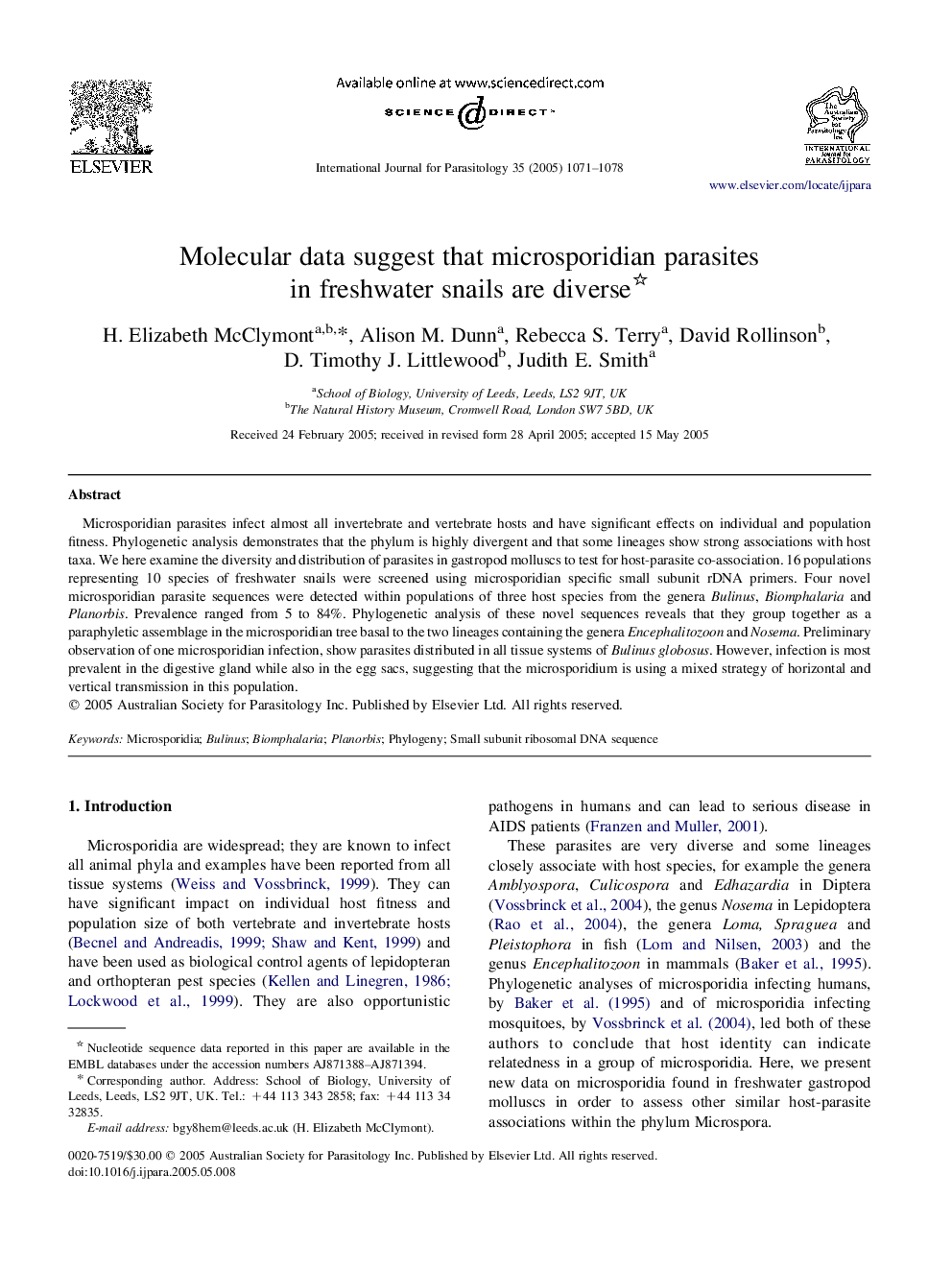| Article ID | Journal | Published Year | Pages | File Type |
|---|---|---|---|---|
| 8979696 | International Journal for Parasitology | 2005 | 8 Pages |
Abstract
Microsporidian parasites infect almost all invertebrate and vertebrate hosts and have significant effects on individual and population fitness. Phylogenetic analysis demonstrates that the phylum is highly divergent and that some lineages show strong associations with host taxa. We here examine the diversity and distribution of parasites in gastropod molluscs to test for host-parasite co-association. 16 populations representing 10 species of freshwater snails were screened using microsporidian specific small subunit rDNA primers. Four novel microsporidian parasite sequences were detected within populations of three host species from the genera Bulinus, Biomphalaria and Planorbis. Prevalence ranged from 5 to 84%. Phylogenetic analysis of these novel sequences reveals that they group together as a paraphyletic assemblage in the microsporidian tree basal to the two lineages containing the genera Encephalitozoon and Nosema. Preliminary observation of one microsporidian infection, show parasites distributed in all tissue systems of Bulinus globosus. However, infection is most prevalent in the digestive gland while also in the egg sacs, suggesting that the microsporidium is using a mixed strategy of horizontal and vertical transmission in this population.
Related Topics
Life Sciences
Immunology and Microbiology
Parasitology
Authors
H. Elizabeth McClymont, Alison M. Dunn, Rebecca S. Terry, David Rollinson, D. Timothy J. Littlewood, Judith E. Smith,
